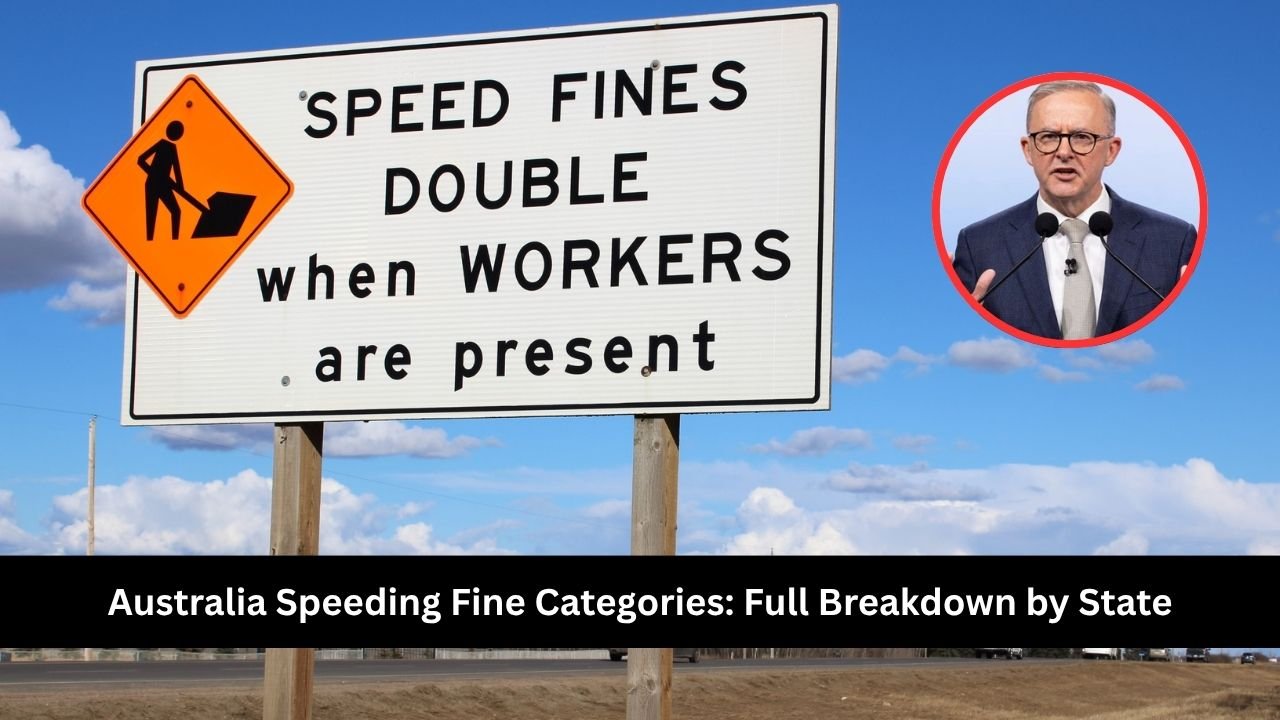Speeding penalties across Australia vary greatly between states and territories, reflecting local enforcement policies and safety priorities. In 2025, each jurisdiction continues to apply tiered penalties based on how far a driver exceeds the speed limit, with harsher outcomes for offences in school zones and serious speeding cases leading to license suspensions.
Australian Capital Territory (ACT)
The ACT has distinct penalties for speeding inside and outside school zones.
- Under 15 km/h over: $326 fine and 1 demerit point; in a school zone $353 and 1 point.
- 15–30 km/h over: $484 fine and 3 points; in a school zone $529 and 3 points.
- 30–45 km/h over: $700 fine and 4 points; in a school zone $799 and 4 points.
- Over 45 km/h: $1,841 fine and 6 points; in a school zone $2,136 and 6 points.
The ACT strictly enforces speeding near schools, reflecting its focus on pedestrian safety and urban compliance.
New South Wales (NSW)
NSW uses one of the most detailed systems nationally, and learner or provisional drivers face automatic suspensions for serious breaches.
- Under 10 km/h over: $145 and 1 point; in school zones $238 and 2 points.
- Over 10 km/h: $334 and 3 points; in school zones $429 and 4 points.
- Over 20 km/h: $574 and 4 points; in school zones $715 and 5 points.
- Over 30 km/h: $1,070 and 5 points, 3-month suspension for provisional or learner drivers.
- Over 45 km/h: $2,959 and 6 points, 6-month suspension.
The state’s focus on strict licence suspension policies has been credited with reducing repeat speeding behaviours.
Northern Territory (NT)
The NT’s smaller population and open highway conditions mean its system is simpler, using four main speed brackets.
- Up to 15 km/h over: $150 and 1 point.
- 15–30 km/h over: $300 and 3 points.
- 30–45 km/h over: $600 and 4 points.
- Over 45 km/h: $1,000 and 6 points.
While the NT allows some 130 km/h zones, penalties remain strong for excessive speeding to maintain safety on long stretches of remote roads.
Queensland (QLD)
Queensland’s fines are among the steepest for extreme speeding, with automatic suspensions for the highest category.
- Under 11 km/h: $322 and 1 point.
- 11–20 km/h: $483 and 3 points.
- 21–30 km/h: $725 and 4 points.
- 31–40 km/h: $1,209 and 6 points.
- Over 40 km/h: $1,854 and 8 points with a 6-month suspension.
The state combines heavy financial penalties with strong enforcement in road safety campaigns, reinforcing speed compliance.
South Australia (SA)
In South Australia, fines and demerits rise sharply with speed, with immediate suspensions for high-level offences.
- Under 10 km/h: $202 and 2 points.
- 10–20 km/h: $455 and 3 points.
- 20–30 km/h: $926 and 5 points.
- 30–45 km/h: $1,684 and 7 points.
- Over 45 km/h: $1,895 and 9 points, plus a 6-month suspension.
SA’s approach is influenced by frequent rural road crashes, focusing on high deterrence for excessive speed.
Tasmania (TAS)
Tasmania runs a seven-tier system, one of the most detailed in Australia, to cover small speed increments precisely.
- Under 10 km/h: $101 and 2 points.
- 10–14 km/h: $151.50 and 2 points.
- 15–22 km/h: $202 and 3 points.
- 23–29 km/h: $353.50 and 3 points.
- 30–37 km/h: $606 and 5 points.
- 38–44 km/h: $858.50 and 6 points, 3-month suspension.
- Over 45 km/h: $1,161.50 and 6 points, 4-month suspension.
TAS’s incremental structure reflects efforts to balance enforcement fairness and road safety in smaller communities.
Victoria (VIC)
Victoria enforces immediate suspensions for serious speeding, with demerit and fine escalation.
- Under 10 km/h: $247 and 1 point.
- 10–24 km/h: $395 and 3 points.
- 20–24 km/h in 110 km/h zone: $395, 3-month suspension.
- 25–29 km/h: $543, 3-month suspension.
- 30–34 km/h: $642, 3-month suspension.
- 35–39 km/h: $741, 6-month suspension.
- 40–44 km/h: $840, 6-month suspension.
- Over 45 km/h: $988, 12-month suspension.
The Victorian model focuses less on extreme fines and more on extended loss of licence time to deter habitual speeders.
Western Australia (WA)
WA’s fines increase quickly with speed, and larger categories attract more demerits and financial consequences.
- 9 km/h or less: $100 and 0 points.
- 9–19 km/h: $200 and 2 points.
- 19–29 km/h: $400 and 3 points.
- 29–40 km/h: $800 and 6 points.
- Over 40 km/h: $1,200 and 7 points.
WA’s lower-level offences have no demerit points, but heavy penalties for high-range speeding reflect its zero-tolerance stance for serious breaches.
National Overview
Across Australia in 2025, there is growing alignment between jurisdictions in escalating fines and suspensions for severe speeding offences. While fine amounts vary due to state-level legislation and local cost-of-living adjustments, the consistent message nationwide is clear: exceeding the limit risks both your wallet and licence.
Australian motorists should also be aware that double demerits can apply during public holidays in some states, adding another layer of deterrence. Staying within the limit not only avoids fines but plays a crucial role in keeping Australian roads safe for all users.
